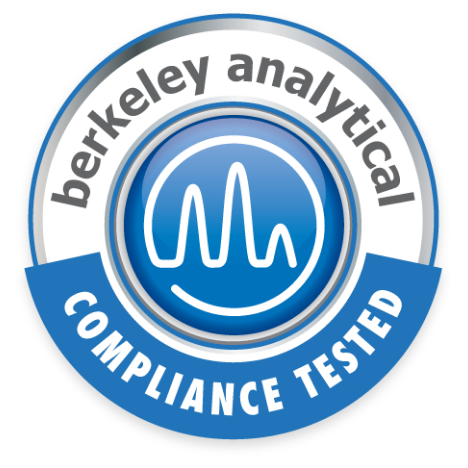VOC, Formaldehyde & Phthalate Testing for Interior Building Products
Testing Services for Building Products
Berkeley Analytical tests interior building products to demonstrate compliance with USGBC LEED and other green building standard requirements and for quality control and regulatory compliance. BkA’s testing services include:
- California Department of Public Health (CDPH) Standard Method V1.2, 2017 for the Testing and Evaluation of Volatile Organic Chemical Emissions from Indoor Sources Using Environmental Chambers, often referred to as California Section 01350
- VOC Content testing of paints & coatings and adhesive & sealants by ASTM D6886
- Small chamber testing of composite wood products for formaldehyde emissions by ASTM D6007 and EN 16516
- Quality control testing and odor evaluations by ASTM D5116
- Content analysis of phthalate esters and flame retardants for:
- Compliance with the Consumer Product Safety Improvement Act (CPSIA) for children’s products
- Assessment of product labeling requirements for California Proposition 65
USGBC LEED EQ Credit: Low-Emitting Materials
The LEED v4/4.1 Low-Emitting Materials credit includes all major categories and layers of interior building products. The LEM credit in LEED v4.1 has been simplified to make compliance more attainable:
- Building interior is organized into 8 categories: Paints & Coatings, Adhesives & Sealants, Floors, Wall Panels, Ceilings, Insulation, Furniture Composite wood.
- Threshold ranges for category compliance have been adjusted to 75% to 90% by cost or surface area, or by volume or surface area for wet-applied products.
- Each layer of an assembly, e.g., underlayment and finish flooring, must be compliant.
- Wet-applied products – Paints & Coatings and Adhesives & Sealants – must meet both VOC Emission requirements and regulatory VOC Content requirements.
- Composite woods must certified as either No-Added Formaldehyde (NAF) or Ultra-Low Emitting Formaldehyde (ULEF) resin products (EPA TSCA Title VI, CARB ATCM), or be salvaged materials.
- Testing must be performed by an ISO/IEC 17025 accredited laboratory and third-party certification bodies must be accredited under ISO/IEC 17065.
BkA testing allows manufacturers to demonstrate compliance with LEED Low-Emitting Materials credit.
- BkA’s testing services are used by the FloorScore®™ and Indoor Advantage Gold™ certification programs operated by SCS Global Services.
- Plus, manufacturer’s self-declared claims are accepted by USGBC and are considered equal to 3rd party certified claims. See our discussion of putting test results to work.
- BkA’s ClearChem™ program provides a practical solution. ClearChem is a fully transparent program in which companies self-declare compliance of their products against the criteria in CDPH Standard Method V1.2. The ClearChem Self Declaration provides all of the information needed to qualify a product for LEED v4 EQ Credit: Low-Emitting Materials.
Many other Green Building standards also recognize and give credit to products compliant with CDPH Standard Method V1.2, including:
- Collaboration for High Performance Schools (CHPS), National Core Criteria v3.0
- The WELL Building Standard, WELL v2
- Green Globes Assessment Protocol, ANSI/GBI-2019
- ASHRAE/USGBC/IES Standard 189.1 Standard for the Design of High-Performance Buildings
- International Living Future Institute, Living Building Challenge 4.0
- NAHB National Green Building Standard, ICC 700-2020 for homes
Canadian Building Code
Berkeley Analytical provides VOC emission testing services for spray polyurethane foam (SPF) insulation sold in Canada. The National Building Code of Canada requires SPF insulation to be tested for VOC emissions by method CAN/ULC-S774. The Canadian Construction Materials Centre (CCMC) issues evaluation reports for products that are in compliance with this and other requirements of Canadian building codes.
- BkA is ISO/IEC 17025 accredited for the analysis of SPF insulation for VOC emissions by CAN/ULC-S774
- BkA and its partners, several ISO 17020 Inspection bodies and a board-certified toxicologist, are recognized by CCMC
French Labeling Law and The Blue Angel Certification
Berkeley Analytical can test your interior building products for compliance with the French product labeling law’s VOC emission requirements. BkA also is a recognized testing institute for The Blue Angel (Der Blaue Engel) certification program and is ISO/IEC 17025 accredited for European VOC emission standards including:
- EN 16516, the EU harmonized test method for evaluation of VOC emissions from construction products
- ISO 16000-9, ISO 16000-11, ISO 16000-6, ISO 16000-3 VOC Emissions and Indoor Air Quality analysis standards
In the EU, the CE mark is used to declare conformity with product safety requirements of EU regulations and to facilitate trade among member nations. The German DIBt requirement that products be compliant with the German AgBB scheme for VOC emissions is mandatory in Germany for certain categories of building products and may be voluntarily used to demonstrate compliance to other EU national regulations.
View our product sampling guide for CDPH Standard Method V1.2.


